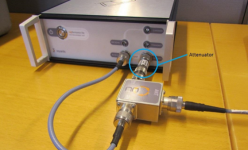
Test semi-passive tags with Finnish tag performance tester
[ad_1]
I. Introduction
RFID electronic tags are classified into passive tags, active tags, and semi-passive tags according to the presence or absence of power supply inside the tags. Sometimes they are also called semi-active tags.
Passive electronic tag: There is no battery inside the tag, and its working energy needs to be provided by the electromagnetic field emitted by the reader. It is light in weight, small in size, long in life, and low in cost. It can be made into various cards. It is currently the most popular electronic tag. Form, its recognition distance is shorter than that of active electronic tags, and it requires a larger reader-writer transmit power.
Active electronic tag: It is powered by the battery inside the tag and does not require energy from the reader to start. The tag can actively emit electromagnetic signals, and the identification distance is long, usually up to tens of meters or even hundreds of meters. The disadvantage is that the cost is high. The life span is limited, and it is not easy to make a thin card.
Semi-passive electronic tag: There is a battery inside, but the battery only supplies power to the internal circuit of the tag and does not actively transmit signals. Its energy transfer method is similar to that of passive systems, so its working life is much longer than that of general active system tags. The sensitivity of semi-passive tags is very high, generally -20 to -30dBm, so here when the test distance is relatively short, we need to increase the attenuation at the transmitting end of the label performance tester in Finland, because of the activation sensitivity of semi-passive tags Very high, it can be activated within the normal transmit power range of the reader, and its threshold cannot be tested without attenuation.
Second, the method of testing semi-passive tags
When testing passive tags with a tag performance tester, we usually add a 6dB attenuator to the receiving port. Here, when testing semi-passive tags, we need to transfer the attenuator to the transmitting port and connect as shown in the figure below:

The signal from the transmitting port first passes through the attenuator, which is connected to the circulator, the next port along the circulator direction is connected to the antenna, and the last port of the circulator is connected to the receiving port of the test host.
After that, update the firmware with the software, and then calibrate the environment with the reference label to start the test. The system can detect that the label activation sensitivity can be better than -25dBm, and the test distance is 30 cm.

If you need to test a lower power value, that is to say, the sensitivity of a semi-passive electronic tag is very high, in this case we can increase the test distance appropriately, or increase the attenuation value of the tag performance tester’s transmitting port. Attenuator, another way is that we can use an adjustable attenuator to connect to the launch port of the tag performance tester.
3. Conclusion
The Finnish Voyantic label performance tester has very rich functions. Different connection methods of radio frequency devices can be used flexibly to test different types of labels. The test results can be saved in the form of graphs and records. Its connection is simple, and the test accuracy is high. convenient.
[ad_2]






